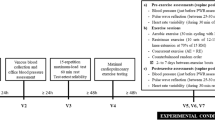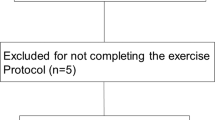Abstract
Low plasma renin levels and augmented cardiovascular reactivity to stress are common in blacks and have been linked to the development of hypertension in this population. We (i) compared cardiovascular and plasma renin reactivity to a cold pressor test between a black and white population; and (ii) investigated the associations between cardiovascular and plasma renin reactivity within the black and white populations. Our population consisted of 153 black and 188 white men and women (age range, 20–65 years). We measured blood pressure (BP), heart rate (HR), stroke volume (SV), total peripheral resistance (TPR), Windkessel arterial compliance, and determined plasma renin levels at rest and during the cold pressor test. Reactivity was calculated for each participant as the percentage change from the resting value. We found lower renin and elevated BP in blacks compared with whites at rest and during stress (both, P<0.001). During stress, HR increased more in blacks (P<0.001), whereas SV (P<0.001) and arterial compliance (P=0.013) decreased more in blacks compared with whites. TPR reactivity was positively associated with renin reactivity in blacks only (β=0.17; P=0.041), while in whites diastolic BP reactivity was positively associated with renin reactivity (β=0.21; P=0.005). Although blacks had suppressed renin levels at rest and during acute stress, vascular resistance reactivity associated positively with renin reactivity only in the black population. These results suggest that low renin levels in blacks during rest and stress are linked to increased peripheral vascular responses to stress, which may contribute to elevated BP in blacks.
This is a preview of subscription content, access via your institution
Access options
Subscribe to this journal
Receive 12 digital issues and online access to articles
$119.00 per year
only $9.92 per issue
Buy this article
- Purchase on Springer Link
- Instant access to full article PDF
Prices may be subject to local taxes which are calculated during checkout

Similar content being viewed by others
References
Schutte AE, Schutte R, Huisman HW, van Rooyen JM, Fourie CM, Malan NT et al. Are behavioural risk factors to be blamed for the conversion from optimal blood pressure to hypertensive status in Black South Africans? A 5-year prospective study. Int J Epidemiol 2012; 41: 1114–1123.
Sliwa K, Wilkinson D, Hansen C, Ntyintyane L, Tibazarwa K, Becker A et al. Spectrum of heart disease and risk factors in a black urban population in South Africa (the Heart of Soweto Study): a cohort study. Lancet 2008; 371: 915–922.
Opie LH, Seedat YK . Hypertension in sub-Saharan African populations. Circulation 2005; 112: 3562–3568.
Thomas KS, Nelesen RA, Ziegler MG, Bardwell WA, Dimsdale JE . Job strain, ethnicity, and sympathetic nervous system activity. Hypertension 2004; 44: 891–896.
Reimann M, Hamer M, Schlaich MP, Malan NT, Ruediger H, Ziemssen T et al. Greater cardiovascular reactivity to a cold stimulus is due to higher cold pain perception in black Africans: the Sympathetic Activity and Ambulatory Blood Pressure in Africans (SABPA) study. J Hypertens 2012; 30: 2416–2424.
Huisman HW, Schutte AE, Schutte R, van Rooyen JM, Fourie CM, Mels CM et al. Exploring the link between cardiovascular reactivity and end-organ damage in African and Caucasian men: the SABPA study. Am J Hypertens 2013; 26: 68–75.
Van Rooyen J, Huisman H, Eloff F, Laubscher P, Malan L, Steyn H et al. Cardiovascular reactivity in Black South-African males of different age groups: the influence of urbanization. Ethn Dis 2001; 12: 69–75.
MacArthur J, MacArthur C . Laboratory tasks for cardiovascular reactivity research, 2001. Available at: http://www.macses.ucsf.edu/research/psychosocial/reactivitytable.php (Accessed 05 November 2014).
Stein CM, Lang CC, Singh I, He HB, Wood AJ . Increased vascular adrenergic vasoconstriction and decreased vasodilation in blacks additive mechanisms leading to enhanced vascular reactivity. Hypertension 2000; 36: 945–951.
McLean J, Sathasivam P, MacNaughton K, Graham T . Cardiovascular and norepinephrine responses of men and women to two cold pressor tests. Can J Physiol Pharmacol 1992; 70: 36–42.
Nguyen G, Muller DN . The biology of the (pro) renin receptor. J Am Soc Nephrol 2010; 21: 18–23.
Hirose T, Hashimoto M, Totsune K, Metoki H, Asayama K, Kikuya M et al. Association of (pro) renin receptor gene polymorphism with blood pressure in Japanese men: the Ohasama study. Am J Hypertens 2009; 22: 294–299.
Ichihara A, Kaneshiro Y, Takemitsu T, Sakoda M, Nakagawa T, Nishiyama A et al. Contribution of nonproteolytically activated prorenin in glomeruli to hypertensive renal damage. J Am Soc Nephrol 2006; 17: 2495–2503.
Alderman MH, Madhavan S, Ooi WL, Cohen H, Sealey JE, Laragh JH . Association of the renin-sodium profile with the risk of myocardial infarction in patients with hypertension. N Engl J Med 1991; 324: 1098–1104.
van Rooyen JM, Schutte AE, Huisman HW, Schutte R, Fourie CM, Malan NT et al. End-organ damage in urbanized Africans with low plasma renin levels: the SABPA study. Clin Exp Hypertens 2013; 36: 70–75.
Hamer M, Malan L, Schutte A, Huisman H, Van Rooyen J, Schutte R et al. Plasma renin responses to mental stress and carotid intima–media thickness in black Africans: the SABPA study. J Hum Hypertens 2010; 25: 437–443.
Marfell-Jones T, Olds T, Carter A . International Standards for Anthropometric Assessment. International Society for the Advancement of Kinanthropometry (ISAK): Potchefstroom, South Africa, 2006.
Imholz BP, Wieling W, van Montfrans GA, Wesseling KH . Fifteen years experience with finger arterial pressure monitoring: assessment of the technology. Cardiovasc Res 1998; 38: 605–616.
Guelen I, Westerhof BE, van der Sar GL, van Montfrans GA, Kiemeneij F, Wesseling KH et al. Validation of brachial artery pressure reconstruction from finger arterial pressure. J Hypertens 2008; 26: 1321–1327.
Mano GM, Souza VF, Pierin AM, Lima JC, Ignes EC, Ortega KC et al. Assessment of the DIXTAL DX-2710 automated oscillometric device for blood pressure measurement with the validation protocols of the British Hypertension Society (BHS) and the Association for the Advancement of Medical Instrumentation (AAMI). Arq Bras Cardiol 2002; 79: 606–610.
Wesseling K, Jansen J, Settels J, Schreuder J . Computation of aortic flow from pressure in humans using a nonlinear, three-element model. J Appl Physiol 1993; 74: 2566–2573.
Joosten L, Malan L, Uys AS, Alkerwi Aa, Malan NT . Acute cardiometabolic responses facilitating a state of chronic hyperglycemia and renal impairment: the SABPA study. Cardiovasc Endocrinol 2014; 3: 98–106.
Anderson NB . Racial differences in stress-induced cardiovascular reactivity and hypertension: current status and substantive issues. Psychol Bull 1989; 105: 89–105.
Malan L, Hamer M, Schlaich MP, Lambert GW, Harvey BH, Reimann M et al. Facilitated defensive coping, silent ischaemia and ECG left-ventricular hypertrophy: the SABPA study. J Hypertens 2012; 30: 543–550.
Reid IA, Morris B, Ganong W . The renin-angiotensin system. Annu Rev Physiol 1978; 40: 377–410.
Campese VM, Parise M, Karubian F, Bigazzi R . Abnormal renal hemodynamics in black salt-sensitive patients with hypertension. Hypertension 1991; 18: 805–812.
Harrison-Bernard LM . The renal renin-angiotensin system. Adv Physiol Educ 2009; 33: 270–274.
Rosivall L . Intrarenal renin–angiotensin system. Mol Cell Endocrinol 2009; 302: 185–192.
Cooper RS, Borke JL . Intracellular ions and hypertension in blacks. Pathophysiology of Hypertension in Blacks. Oxford: New York, 1993, pp 181–213.
Nguyen G, Delarue F, Burcklé C, Bouzhir L, Giller T, Sraer J-D . Pivotal role of the renin/prorenin receptor in angiotensin II production and cellular responses to renin. J Clin Invest 2002; 109: 1417–1427.
Ichihara A, Suzuki F, Nakagawa T, Kaneshiro Y, Takemitsu T, Sakoda M et al. Prorenin receptor blockade inhibits development of glomerulosclerosis in diabetic angiotensin II type 1a receptor–deficient mice. J Am Soc Nephrol 2006; 17: 1950–1961.
Funke-Kaiser H, Zollmann FS, Schefe JH, Unger T . Signal transduction of the prorenin receptor as a novel therapeutic target for preventing end-organ damage. Hypertens Res 2010; 33: 98–104.
Michel FS, Norton GR, Maseko MJ, Majane OH, Sareli P, Woodiwiss AJ . Urinary angiotensinogen excretion is associated with blood pressure independent of the circulating renin–angiotensin system in a group of African ancestry. Hypertension 2014; 64: 149–156.
De A, Sierra M, Lluch AC, Aguilera MT, Giner V, Bragulat E et al. Fluid, ionic and hormonal changes induced by high salt intake in salt-sensitive and salt-resistant hypertensive patients. Clin Sci 1996; 91: 155–161.
Acknowledgements
We thank the participants of the SABPA study for their voluntary participation and staff members for data collection and analyses. This work was supported by HART, North-West University, South Africa; Metabolic Syndrome Institute, France; Medical Research Council, South Africa; Roche Diagnostics, South Africa and the North West Department of Education. The financial assistance of the NRF towards this research is hereby acknowledged. Opinions expressed and conclusions arrived at are those of the authors and are not necessarily to be attributed to the NRF.
Author information
Authors and Affiliations
Corresponding author
Ethics declarations
Competing interests
The authors declare no conflict of interest.
Rights and permissions
About this article
Cite this article
Gafane, L., Schutte, R., Van Rooyen, J. et al. Plasma renin and cardiovascular responses to the cold pressor test differ in black and white populations: The SABPA study. J Hum Hypertens 30, 346–351 (2016). https://doi.org/10.1038/jhh.2015.88
Received:
Revised:
Accepted:
Published:
Issue Date:
DOI: https://doi.org/10.1038/jhh.2015.88
This article is cited by
-
Associations of central and peripheral blood pressure with the renin-angiotensin-aldosterone system in healthy young adults: the African-PREDICT study
Hypertension Research (2021)
-
Racial differences of early vascular aging in children and adolescents
Pediatric Nephrology (2021)
-
Marinobufagenin is related to elevated central and 24-h systolic blood pressures in young black women: the African-PREDICT Study
Hypertension Research (2018)
-
Change in renin, cardiovascular and inflammatory markers over three years in a black and white population: the SABPA study
BMC Cardiovascular Disorders (2017)
-
Recent advances in understanding hypertension development in sub-Saharan Africa
Journal of Human Hypertension (2017)



